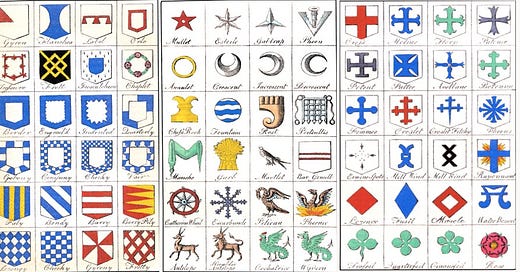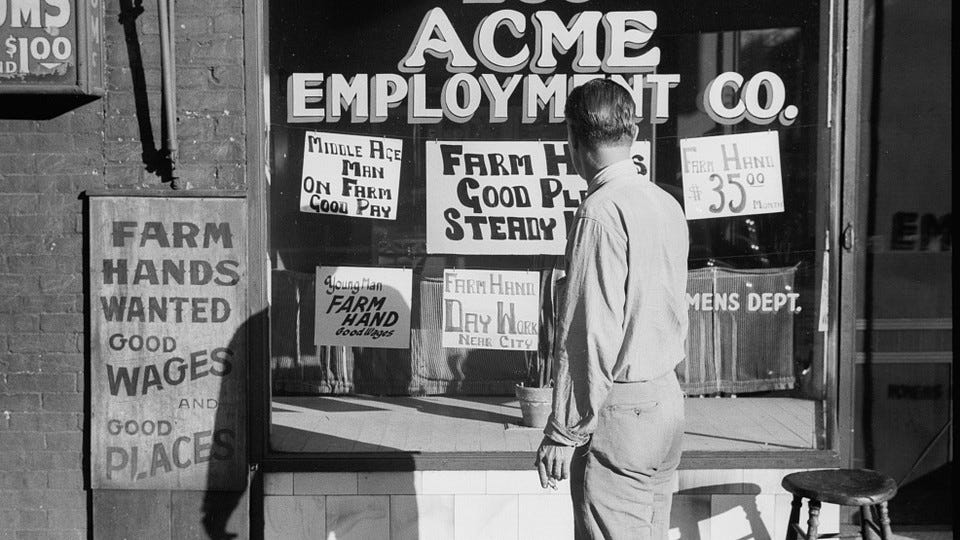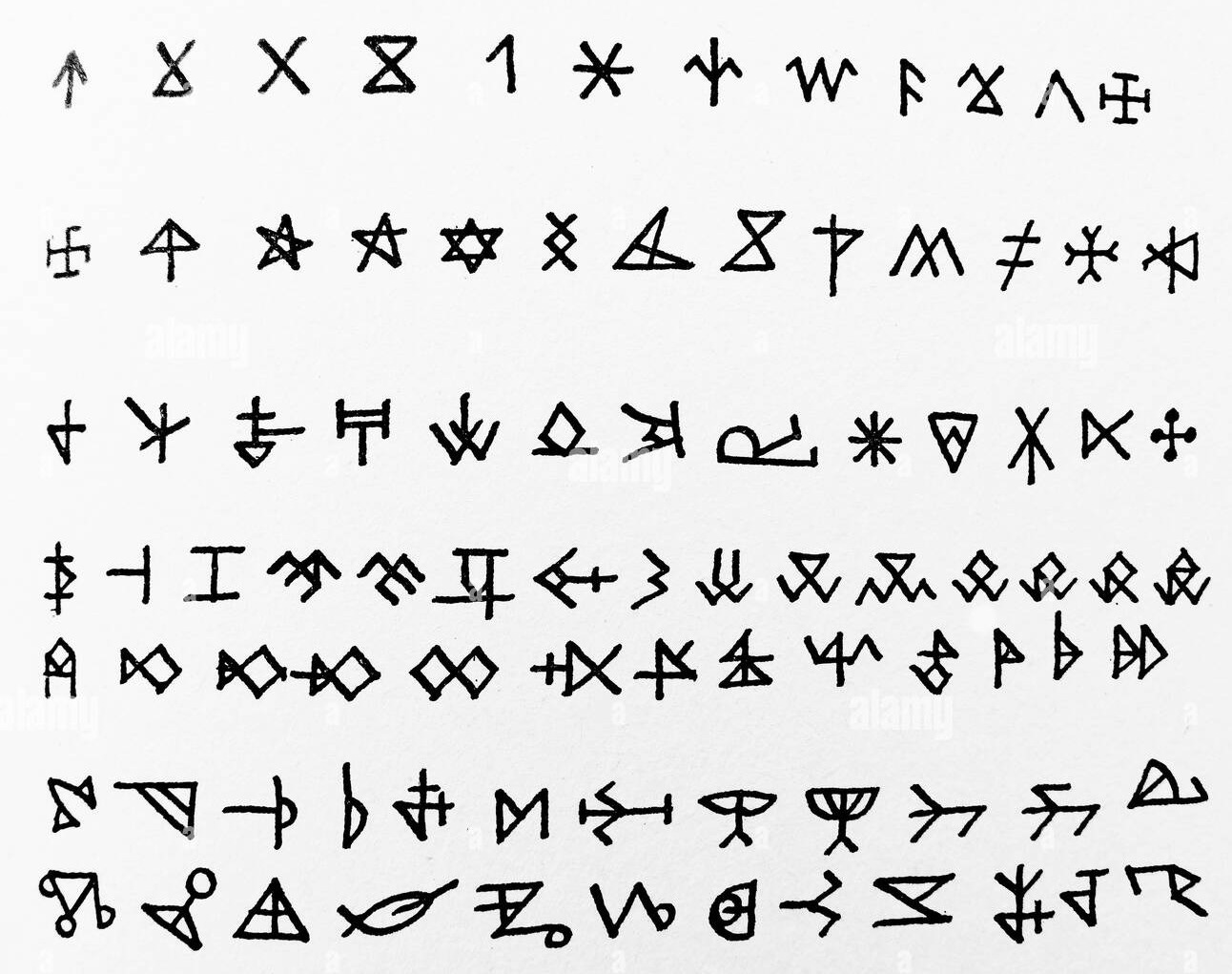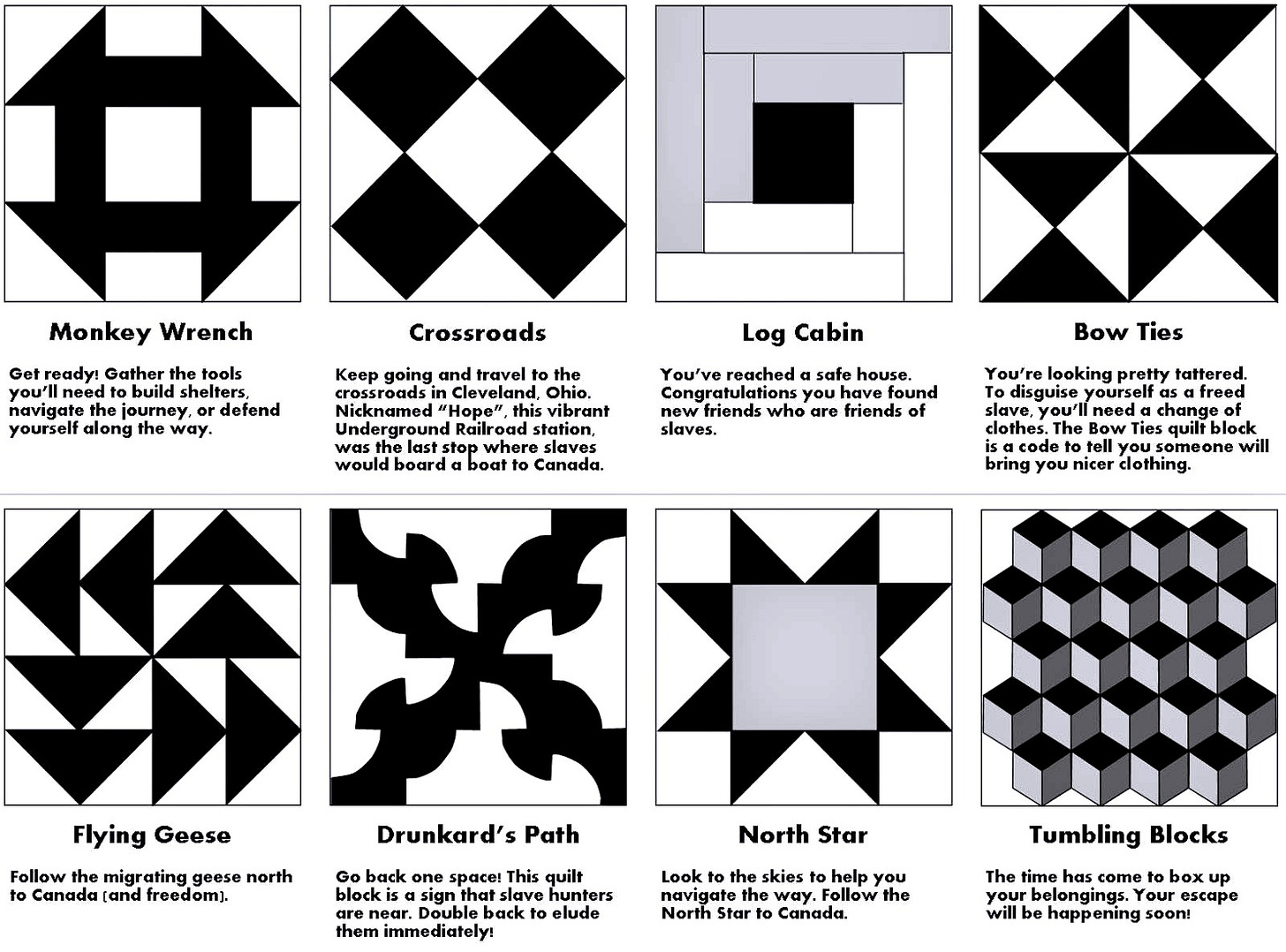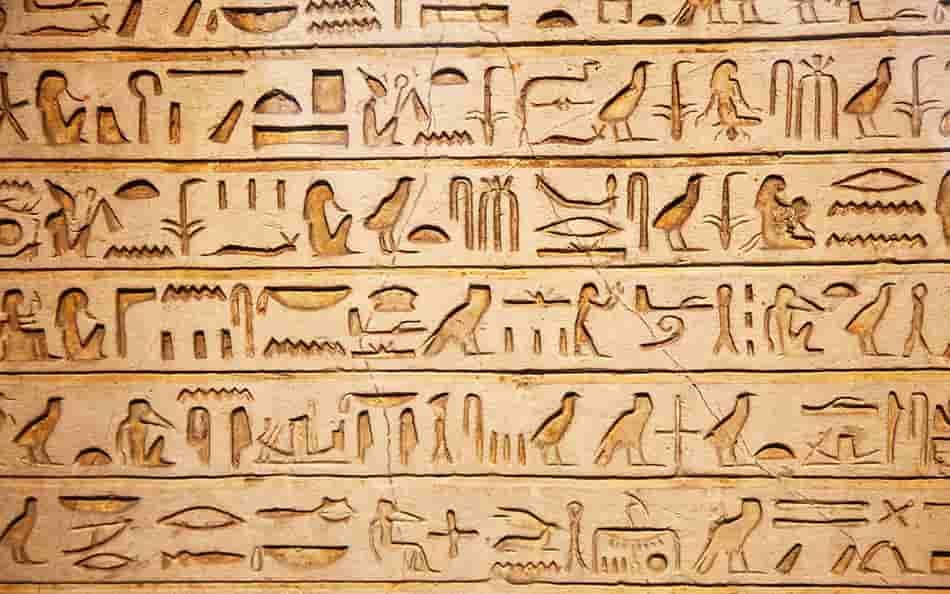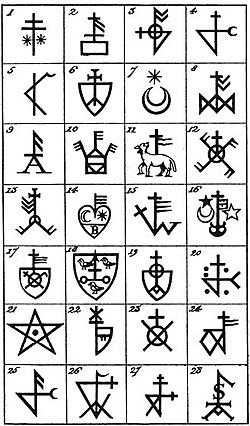The Language we Scrawled, Carved, Stitched, Painted and Passed on
The Hobo Code and Its Ancient Cousins
All across Depression-era America, symbols began to appear: a crescent moon on a tree, a triangle on a barn, a cat’s face by a fence.
Most people never noticed. But for thousands of jobless wanderers crisscrossing the country by train, these markings were everything - a piece of crucial intelligence in a world where survival often depended on knowing who to trust and where to find a helping hand. This was the hidden alphabet of the American road: the hobo code.
The hobo alphabets was a system of pictographic symbols developed and utilized by transient workers as they crisscrossed the vast expanse of the United States. It was a hidden lexicon of survival and unspoken solidarity of a community bound by circumstance and the clang of the railroad. But it was also a code of ethics on how they should behave toward others and toward each other.
These messages were intentionally ephemeral: easy to erase or overlook, yet clear to those trained to recognize them. Think Yelp + Google Maps + a moral compass but secretive.
Brought to life by: Chalking, carving, scratching with nails or stones
Medium/material: Fenceposts, sidewalks, trees, barns, railcars
Purpose: Discreet, temporary communication about danger, safety, opportunity
Economic Context and Rise of the Hobo
The emergence of the hobo subculture in America was deeply intertwined with the nation's economic and social transformations in the late 19th and early 20th centuries. The period following the Civil War witnessed a massive expansion of the railroad network, opening up new territories and creating a demand for transient labor. As industries grew and agricultural landscapes shifted, many individuals found themselves seeking work wherever it could be found. This era saw the rise of the "knights of the road," individuals who embraced a life of travel in search of opportunity.
The hobo phenomenon gained significant momentum during the tumultuous years of the Great Depression in the 1930s. The catastrophic economic downturn left millions unemployed and displaced. Faced with widespread poverty and a scarcity of resources, countless Americans were forced to take to the rails, hopping freight trains in a desperate search for any form of work that could provide sustenance. This period witnessed the hobo population swell to unprecedented numbers, solidifying their presence in the American landscape and amplifying the need for effective communication among them.
“Hobo” vs. “Tramp” vs. “Bum”
Within this transient community, a distinct terminology emerged, reflecting different attitudes towards work and travel. It's crucial to understand these nuances to appreciate the self-perception and values of the hobos who utilized the code:
Hobo
At its core, the term "hobo" described a traveling worker. These individuals were characterized by their willingness to seek out and engage in honest labor, moving from place to place as opportunities arose. They saw themselves as dignified laborers temporarily displaced by economic hardship or drawn to the freedom of the open road in pursuit of work.
Tramp
The term "tramp" carried a slightly different connotation. While tramps also traveled, they were generally perceived as individuals who avoided work whenever possible, preferring to rely on charity or other means of support without actively seeking employment.
Bum
The term "bum" was the most pejorative of the three. It referred to individuals who neither traveled nor worked, often seen as aimless and dependent on others for survival.
The distinction represented a value system within the transient community. Hobos, who were the primary users of the code, prided themselves on their work ethic and mutual support. The hobo code, in many ways, reflected this ethos, emphasizing self-reliance, respect for local communities and the importance of sharing information that could aid fellow working travelers.
A Look at Parallel Symbol Systems Across Time and Civilizations
The hobo code, while a distinctly American phenomenon, wasn't an isolated instance of visual communication used by marginalized or mobile groups. Throughout history and across cultures, various communities have developed their own unique systems of symbols to convey information discreetly and effectively. Comparing the hobo code to more formal and institutionalized ancient sign systems reveals both similarities and significant differences.
Stonemasons (Medieval)
In the towering cathedrals and castles of medieval Europe, stonemasons left behind more than just architecture - they left their mark, quite literally. These artisans developed a system of “mason marks,” symbols they would carve into the stones they worked on. At first glance, they might look like random scratches or personal logos, but they held layered meanings.
Each mason had a unique symbol, almost like a signature. These marks served practical purposes, such as tracking who worked on which stones for payment or quality control. But they also carried deeper significance. Some marks identified a mason's guild affiliation, signaling membership in a close-knit brotherhood of craftsmen who passed down skills and secrets through generations.
In certain cathedrals, like York Minster in England, historians have cataloged hundreds of unique mason marks, often tucked into corners or hidden along the ribs of vaulted ceilings. Some scholars even believe these marks occasionally served as cryptic instructions for other masons - symbolic breadcrumbs guiding how to assemble complicated designs.
Brought to life by: Carving with chisels, picks and metal tools
Medium/material: Limestone, sandstone, granite blocks in cathedrals and castles
Purpose: Identification, craftsmanship, guild affiliation, instruction
Escaped Slaves (U.S.)
During the darkest chapters of American history, enslaved people developed ingenious ways to resist, communicate and survive. One of the most compelling, though still debated forms of covert messaging was the use of quilt codes.
These quilts, often draped innocently over fences or washing lines, may have contained hidden instructions for those escaping via the Underground Railroad. A specific pattern like the "Log Cabin" could suggest a safe house nearby, while "Flying Geese" might indicate a direction to follow under the cover of night. A “Drunkard’s Path” could warn escapees to move in zigzags to avoid trackers.
Historians debate whether these quilt codes were part of a widespread, organized system or more localized efforts, but the cultural power of the idea is pretty stable. Whether fact or folklore, the concept reflects a powerful truth: when spoken words could betray, symbols offered safety. Like hobo signs, quilt codes turned everyday objects into tools of freedom and navigation, visible only to those who knew how to read between the stitches.
Brought to life by: Hand stitching or quilting
Medium/material: Cotton, muslin, feed sacks, wool scraps
Purpose: Possible encoded messages for routes, safe houses, and caution signs
Egyptian Hieroglyphs
Travel back thousands of years, and you’ll find another symbolic system - one carved not for survival, but for eternity. Egyptian hieroglyphs were an art form, a record-keeping tool and a spiritual script all rolled into one.
Each symbol, from the eye of Horus to the scarab beetle, held layered meanings. A single glyph could represent a sound, an idea or a divine presence. These inscriptions adorned tomb walls, temples and scrolls, designed to guide pharaohs in the afterlife and document the achievements of the elite.
While the hobo code was utilitarian and ephemeral, Egyptian hieroglyphs were sacred and perennial.
Brought to life by: Carving, engraving and brush-painting with natural pigments
Medium/material: Limestone walls, tombs, granite obelisks, papyrus scrolls
Purpose: Religious, ceremonial, administrative, and commemorative communication
Heraldry
In medieval Europe, even warfare had its own language. One of lions, crosses, chevrons, and colors. Heraldic symbols, painted on shields and embroidered onto banners, told the story of who someone was, where they came from and what they stood for. To highlight a few:
Lion / Griffin / Antelope / Unicorn – Courage, vigilance, chivalry, purity
Saltire (diagonal cross) – Represents resolution and bravery
Cross Fitchée – Defense of faith (used in crusades)
Water Bouget – Military service (carrying water)
So, a golden lion might symbolize courage and nobility. A red background could indicate a warrior’s strength.
Heraldry helped identify friend from foe on chaotic battlefields, but it also reinforced the rigid social hierarchies of the time. You didn’t just earn a coat of arms, you inherited it. Your status was engraved in symbolism.
Where heraldry was about standing out, hobo signs were about blending in while quietly passing critical info to those in need.
Brought to life by: Painting and embroidery
Medium/material: Wooden shields, metal armor, silk banners, wool tunics
Purpose: Identification in battle, lineage display, assertion of nobility
Trade Signs (Medieval)
Long before literacy was common, merchants and tradespeople used pictorial signs, AKA merchant’s mark, to let customers know what they offered. A boot hanging outside a shop? That was your cobbler. A tankard over a door? Your local alehouse. A pair of scissors? The town tailor.
These visual cues made commerce accessible in an age when most people couldn’t read. In that sense, they functioned similarly to hobo signs - both were designed to deliver quick, practical messages without relying on words.
The key difference? Trade signs were for everyone, proudly displayed in town squares. Hobo signs were whispered marks on fenceposts, meant for the few who understood the code.
Shared Symbols, Shared Survival
From ancient petroglyphs to medieval trade marks and the whispered codes of resistance movements, humans have consistently devised visual languages to communicate essential information within specific social or cultural contexts.
The hobo code, in this sense, is a modern iteration of this ancient tradition, demonstrating the human capacity to forge understanding and build community through the power of symbols, even in the most challenging of circumstances.
While largely a relic of the past, the hobo alphabet remains an example of how a marginalized group developed a sophisticated communication system to navigate their world, leaving behind a legacy that continues to fascinate and offer insights into the human experience of mobility, resilience and the need for connection.
Which of these symbol systems fascinates you the most?
Until next time!❤️


